Abstract
In recent years, global pear production has seen notable trends and characteristics. China has consistently emerged as the leading producer, with 2022 figures reaching 19.4 million metric tons (Mt), highlighting its dominant position in the market. This reflects China’s robust agricultural infrastructure and favorable growing conditions for pears. Historically, other significant producers include countries in Europe such as Italy and Spain, renowned for their quality pear varieties and cultivation expertise. The industry has witnessed advancements in cultivation techniques, including improved irrigation methods and pest control, enhancing yields and quality. Additionally, consumer demand for pears has spurred innovation in packaging and transportation, facilitating broader international trade. Looking ahead, sustainability practices and climate-resilient agriculture are emerging priorities to mitigate environmental impacts and ensure future growth in pear production worldwide.
Pear production (worldwide)
Over the decades spanning from 1961 to 2022, global pear production has displayed significant characteristics and trends. China’s ascent to producing 19.4 million metric tons (Mt) in 2022 marks a pinnacle, where it now operates at 100% of its peak production capacity. This remarkable achievement underscores China’s dominance in pear cultivation, driven by extensive agricultural investments, favorable climatic conditions, and advanced farming practices. Historically, other major producers such as Italy and the United States have also played pivotal roles, contributing diverse pear varieties and expertise in cultivation techniques. Technological advancements in irrigation, pest management, and post-harvest handling have consistently improved yields and quality across regions. The global market for pears has expanded significantly, facilitated by efficient transportation and international trade agreements. Looking forward, sustainability concerns and climate resilience are emerging priorities, influencing future agricultural practices to ensure continued growth and environmental stewardship in pear production worldwide.
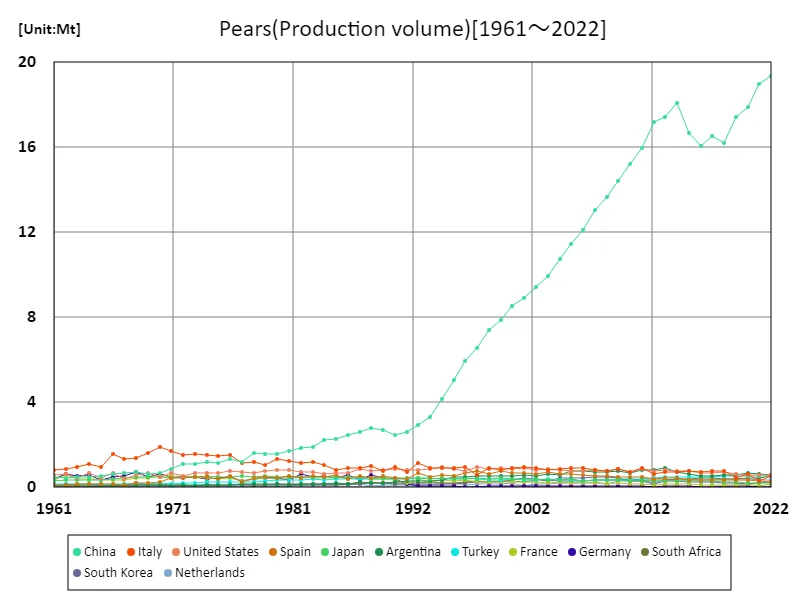

The maximum is the latest one, 19.4Mt of China
Pear production (latest year, world)
China dominates the world agricultural pear production in 2022. China’s production is 19.4 megatons, accounting for about 73% of the world’s total pear production. This establishes China as a major pear producer. Meanwhile, other countries’ pear production is relatively low, averaging 299 kilotons and totaling 26.3 megatons. This difference is due to China’s development of agricultural infrastructure, technological innovation, and the use of vast farmland. Global demand for pears is stable, supported by China’s large-scale production. However, while China’s production remains high, other countries’ pear production is relatively stable. This is due to differences in climatic conditions and agricultural policies in each region, suggesting regional economic disparities in the global pear market. While China’s production will continue to lead the market, other countries are expected to increase their competitiveness through technological innovation and strengthening their market strategies.
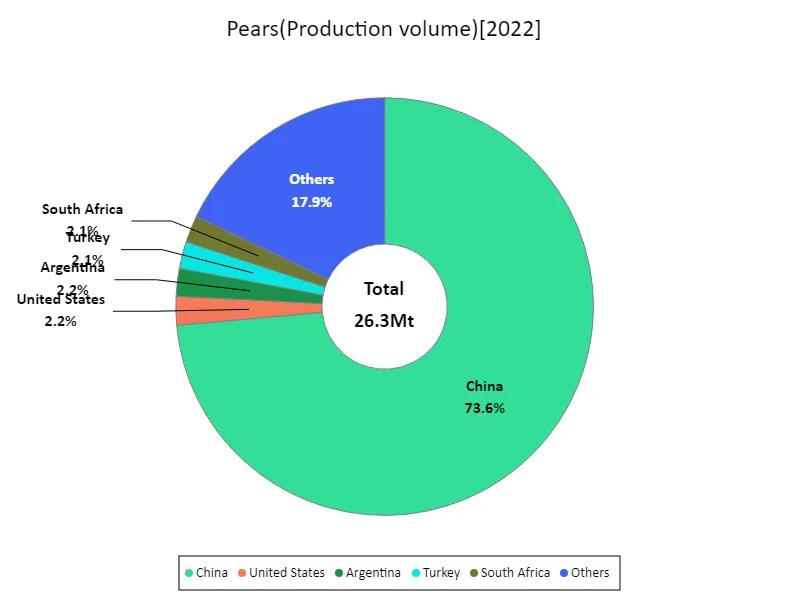

The maximum is 19.4Mt of China, the average is 299kt, and the total is 26.3Mt
Pear production (continent)
As of 2022, Asia leads global pear production with a total volume of 21.3 million metric tons (Mt), marking a significant milestone in the agricultural landscape. This region’s dominance reflects robust cultivation practices and favorable growing conditions prevalent in countries like China, Japan, and South Korea. These nations have historically invested in advanced agricultural technologies, contributing to high yields and diverse pear varieties. Europe and North America also play crucial roles in pear production, leveraging expertise in orchard management and quality control to cater to regional and international markets. Technological advancements, including precision farming and sustainable irrigation methods, continue to enhance productivity and minimize environmental impacts. Global pear trade benefits from efficient logistics and market integration, meeting varied consumer preferences worldwide. Looking forward, sustainability remains a key focus, driving innovation in eco-friendly practices and resilient crop management strategies to ensure continued growth and stability in pear production globally.
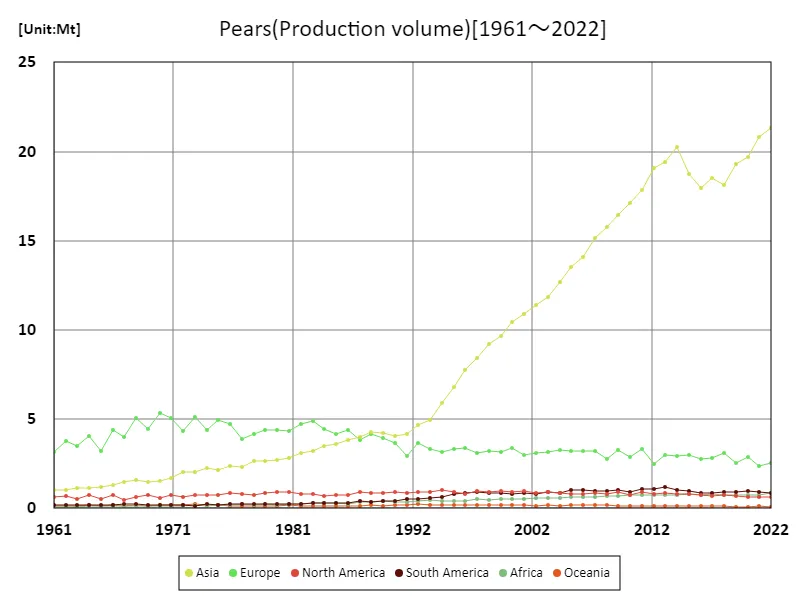

The maximum is the latest one, 21.3Mt of Asia
Pear production (latest year, continental)
Asia was the largest producer of pears in world agriculture in 2022, at 21.3 megatons. This figure is the highest ever, and the Asian region has established its position as a major producer of pears. Pear production in Asia is mainly driven by countries such as China and Japan. China’s vast farmland and efficient agricultural production system enable mass production of pears. Japan is focusing on the cultivation and quality control of high-quality pear varieties. Meanwhile, pear production in other regions is relatively low, with the Asian region accounting for the majority of total production. In some regions, such as Europe and North America, pear production is limited due to climatic conditions and agricultural policies. The average global pear production is 4.39 megatons, with the Asian region accounting for the majority of it. In the global pear market, Asian production continues to supply demand and play a central role in the market. It is expected that Asian pear production will continue to increase in the future and occupy an important position in the global agricultural market.
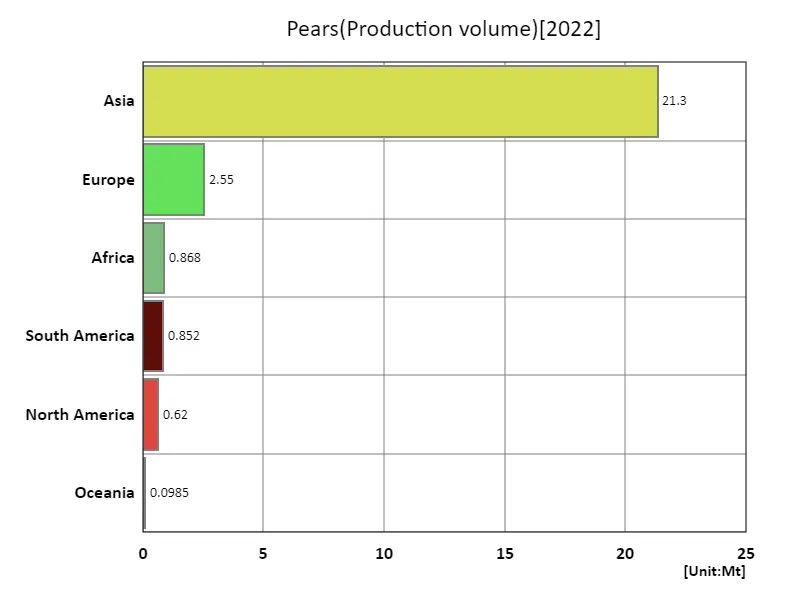

The maximum is 21.3Mt of Asia, the average is 4.39Mt, and the total is 26.3Mt
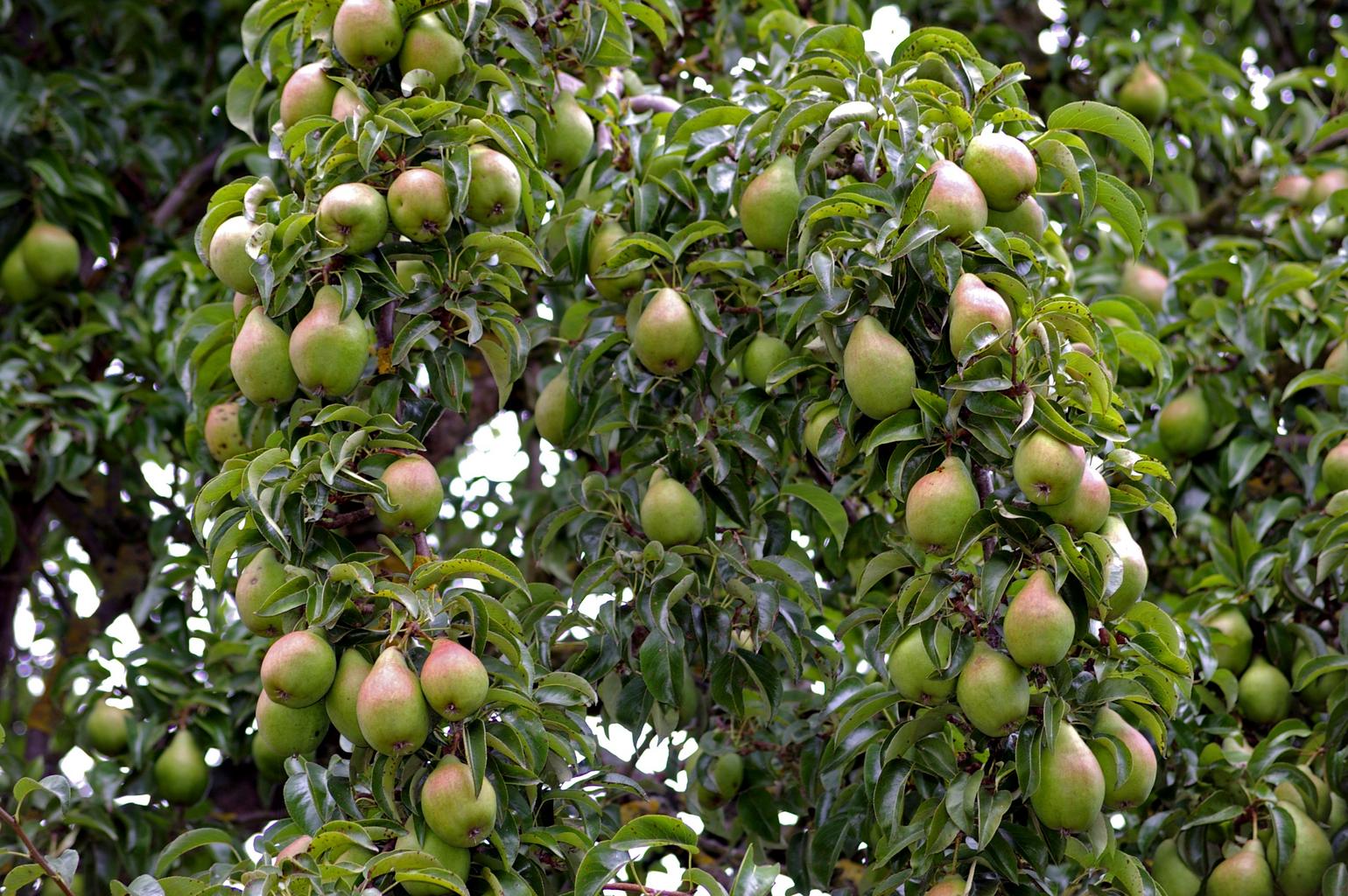


Comments